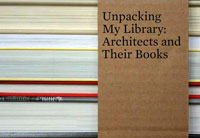By the Book

There is in the life of the collector a dialectical tension between the poles of disorder and order. Naturally, his existence is tied to many other things as well: to a very mysterious relationship to ownership, something about which we will have more to say later; also a relationship to objects which does not emphasize their functional utilitarian value—that is, their usefulness—but studies and loves them as the scene, the stage, of their fate. The most profound enchantment of the collector is the locking of the individual items within a magic circle in which they are fixed as the final thrill, the thrill of acquisition, passes over them. Everything remembered and thought, everything conscious, becomes the pedestal, the frame, the base, the lock of his property. The period, the region, the craftsmanship, the former ownership—for a true collector the whole background of an item adds up to a magic encyclopedia whose quintessence is the fate of his object.
This passage from Walter Benjamin’s essay “Unpacking My Library: A Talk About Book Collecting”is included in a sweet little volume with an engaging (and award-winning) cover, entitled Unpacking My Library: Architects and Their Books, edited by Jo Steffens (Yale University Press), which focuses on 12 accomplished architects and engages them in a discussion (illustrated with photographs) about their personal libraries, asking each for a reading list of their top 10 influential titles. This whole enterprise is fundamentally built on the assumption that what books we have and how we house them speaks tellingly about who we are. An assumption that is employed whenever we find ourselves—let’s say at some cocktail party—faced with a new aggregate of books.
An additional charm of this compendium is the wide range of interests that architects (or at least these dozen) have.
